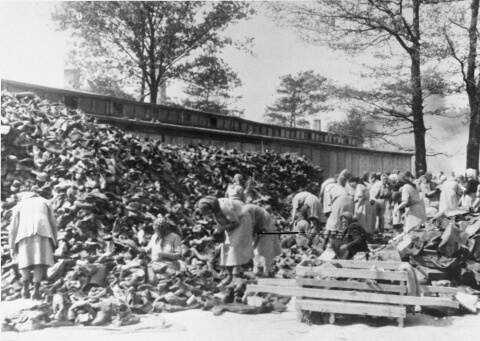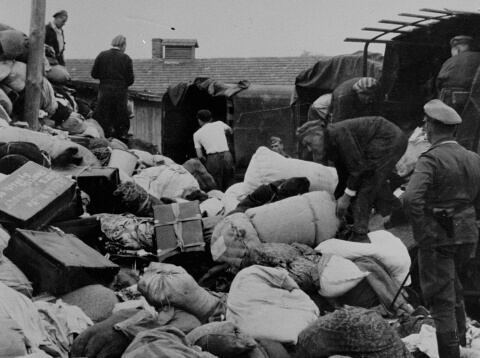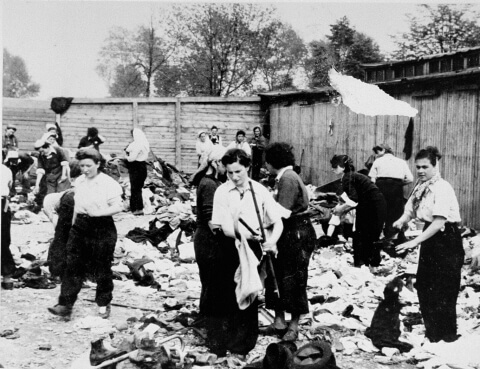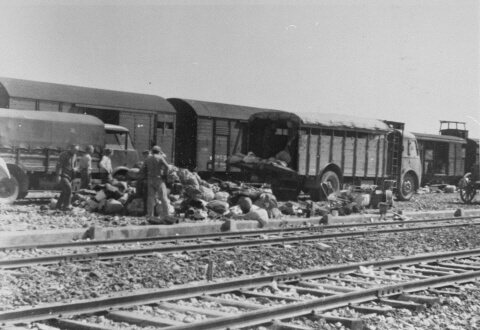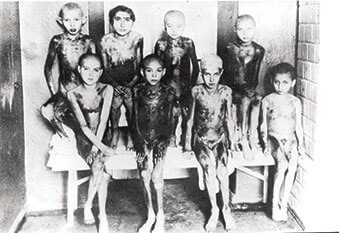Life in the shadow of death
Youth and fitness for work gained a prisoner a temporary reprieve from the gas chambers. From the time they entered Auschwitz-Birkenau, everything was done to debase and dehumanise the Jews who were not immediately gassed in order to rob them of their individuality. Prisoners were deprived of their clothing, given striped uniforms or poorly fitting clothes and had all their body hair shaved. Each of them was identified solely by the number he or she was designated. In some cases the numbers were tattooed onto their left arms. Prisoners were also distinguished by triangular pieces of cloth sewn onto their clothing — political prisoners a red triangle, Jehovah’s Witnesses purple, criminals green, Jews yellow and homosexuals pink.
Prisoners lived in barracks and slept packed together on ‘koyas’ (sections of wooden slats). A prisoner’s day began at dawn with the dreaded Zähl appell (roll call). The weather was cold in Auschwitz at that time of day, even in summer. The prisoners were ordered to line up outdoors in rows of five and to stay there until the SS officers arrived. They were counted and recounted. Sometimes this procedure was repeated in the middle of the night, the inmates forced to stand motionless for hours in the cold, rain or snow. Whoever stumbled or fell was sent to be gassed.

